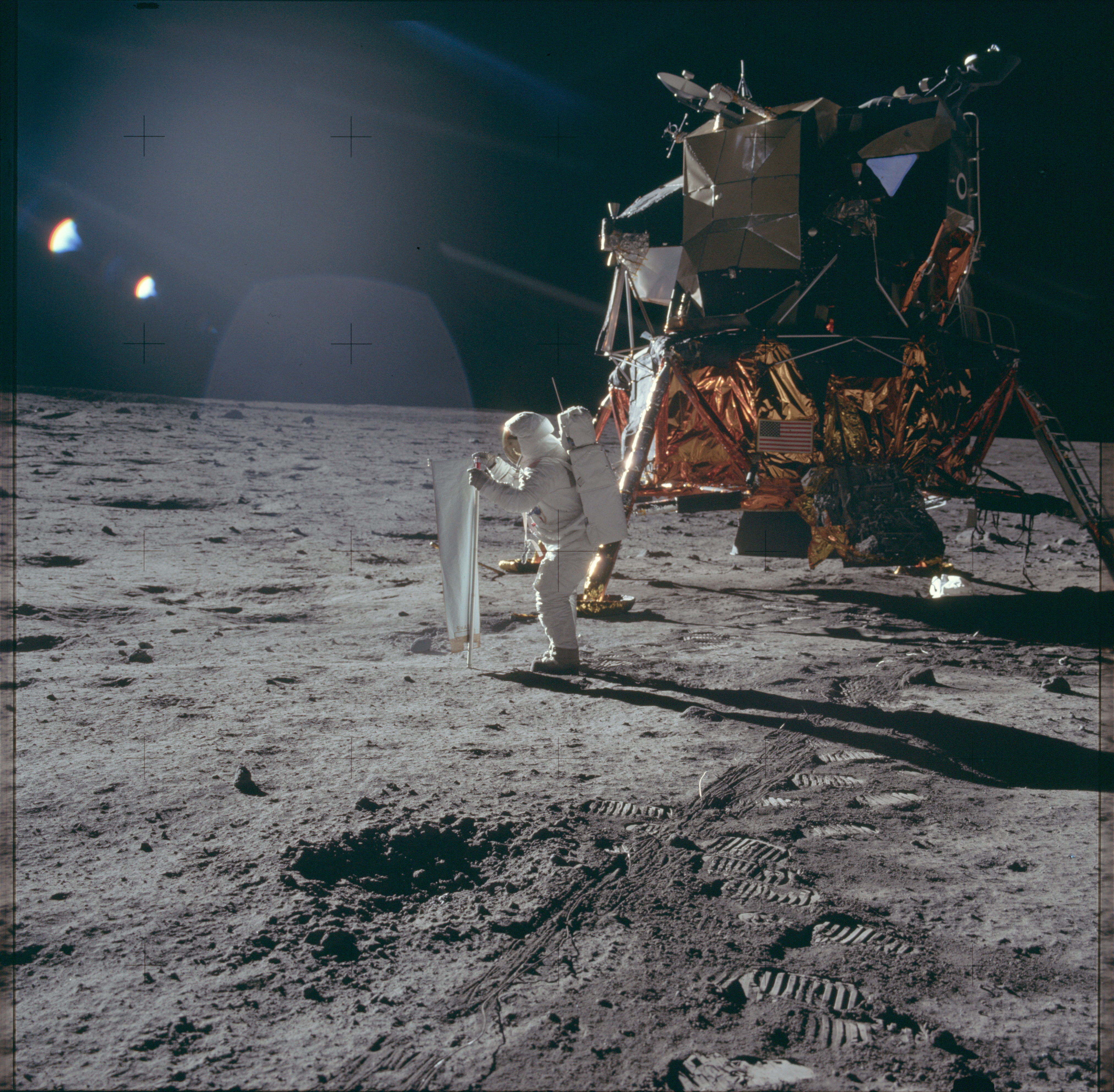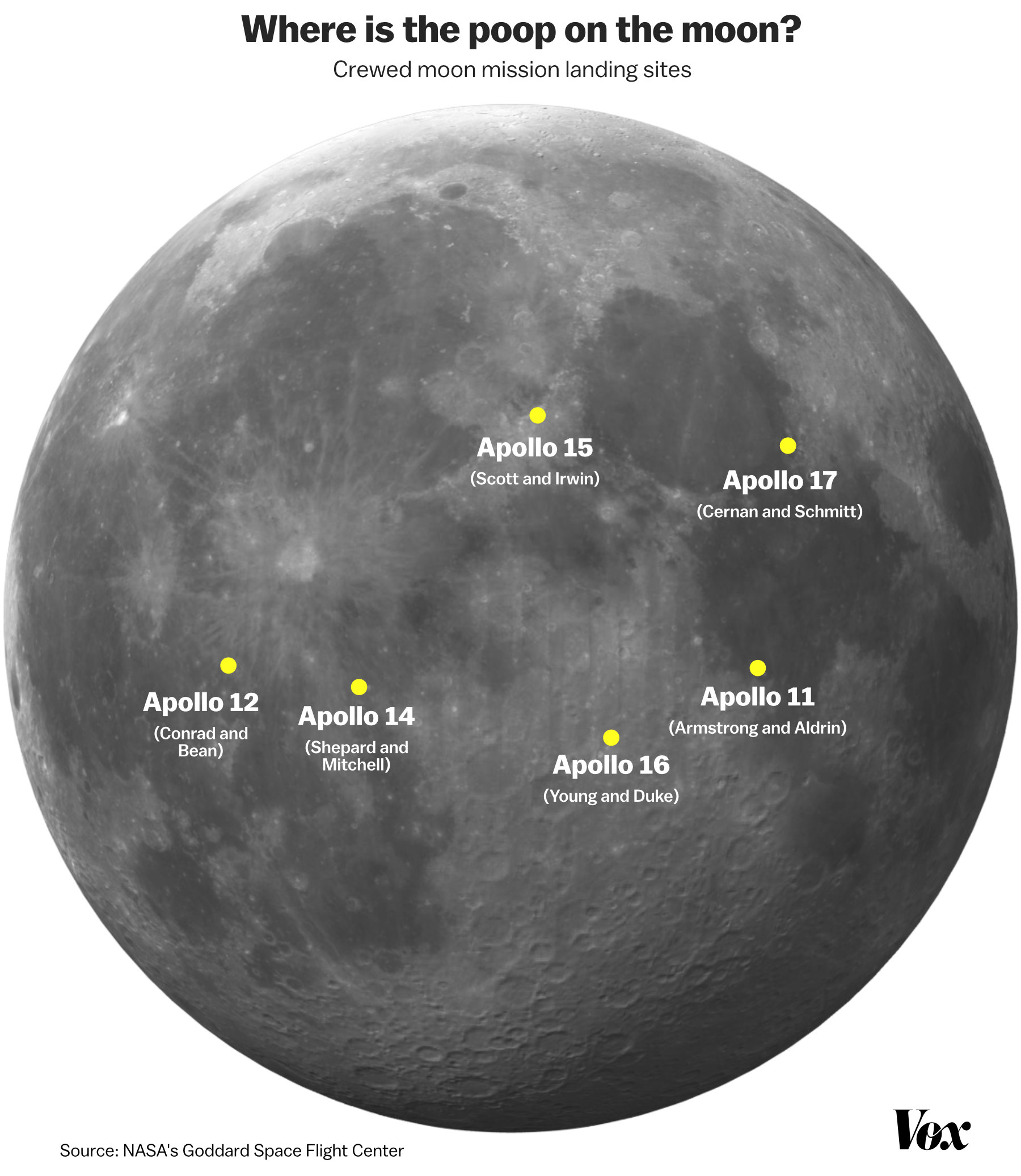Ever wondered what the astronauts that landed on the moon did with their waste? Well, they ditched them on the moon itself.
It’s been nearly 50 years since the Apollo 11 moon landing. Neil Armstrong’s iconic footprint is still there, undisturbed; there’s no atmosphere, no wind on the moon to blow it away.
But the bigger human footprint on the moon is, arguably, the 96 bags of human waste left behind by the six Apollo missions that landed there.
Yes, our brave astronauts took dumps on their way to the moon, perhaps even on the moon, and they left behind their diapers in baggies, on humanity’s doorstep to the greater cosmos.
Just look at the big white bag right underneath the lunar lander:

💩💩
Apollo astronauts left their poop on the moon. We gotta go back for that shit. →
👨🚀 That’s not all what’s been left on the moon. If you were to land on the moon, you’d also find Hammers, Earplugs, Batteries, Camera Systems, etc. Check out the full Catalogue of Manmade Material on the Moon (PDF) (with coordinates) if you’re interested. The catalogue is from 2012, so SpaceIL’s crashed Beresheet Lander is not included on it.

Please tell me they had a kind of scientific reason to leave it there. Like seeing what happens to bacteria in xx year.
Some stuff was left by accident, but most was left there on purpose. Main reason was to save weight on the return trip and to be able to bring back moon rocks.
Now scientists are urging to go back after the waste to indeed, to see how it evolved (or didn’t evolve) over time.